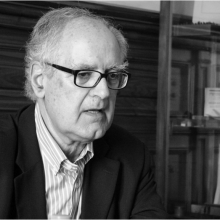Border languages: Mirandese
Presentation of the Mirandese Language:
Mirandese is a minority language spoken in North Eastern Portugal on a 500 sq. km plateau next to the (ex) border with Spain, outlined by the River Douro. Historically, this idiom is integrated within the Asturo-Leonese linguistic domain, with which it shares a series of phonetic characteristics, amongst which the palatalization of "l-" initial in vernacular words of Latin origin. On the one hand constantly subjected to pressure from Portuguese in all situations and on the other to the growing influence of Spanish in tourist/commercial relationships, Mirandese was preserved up until the present time by the rural population. It bears one individuality which is patent in others traces which do not exist in Asturo-Leonese.
Nowadays, according to the latest estimates, it is used by six or seven thousand people in this area. Being a language with an oral tradition, it was the official recognition of its rights, in 1999, that provided it with new prestige, giving it full rights to occupy a space in the media and education. Its situation as an endangered language and the growing integration of rural populations into the circuits of education and modern services show a possible way for its preservation, which is based not only on a desirable rehabilitation of oral conditions but also in the capacity of writing to retain the collective memory in long-lasting and accessible supports.
Keeping this last objective in mind, Lisbon University's Linguistic Centre formed a team in 1994, with the aim of beginning a linguistic normatization at the "corpus" level, as an indispensable stage for it to reach its status recognition. After the publication of a "Proposal for an Orthographic Mirandese Convention" (1995) the Portuguese Parliament recognised the right of the Mirandese speakers to use their language (1999) and in the same year a more complete version of the Convention was published. Its first great result is obvious the increase of publications in Mirandese which can be confirmed from the year 2000 and the number of people who are interested in studying this language nowadays.
Given that the elaboration of the Convention didn't resolve all the problems raised by the setting of writing norms, it was continued the work in this area. In 2001 a web page linked to CLUL was set up with the aim of being a place to present new proposals of norms and advances in researches, to provide basic information about the language, and to maintain a constant exchange of information between scholars of the language via the Forum, Blog and e-mail.
Assignments carried out by CLUL:
-
The 70s and 80s:
-
Linguistic inquiries in the area of Asturo-Leonese dialects spoken in Portugal for the project "Atlas Linguístico-Etnográfico de Portugal e Galiza"
-
1987
-
Participation in "The first day conferences of the Mirandese language and culture" held in Miranda do Douro.
-
The 90s
-
Inquiries in villages of the neighbouring former Leonese area (Saiago and Aliste) in Spain.
-
1993
-
Organization of the regional meeting of the Portuguese Linguistic Association "Linguistic variation in space, time and society" in Miranda do Douro.
-
1995
-
Publication of a "Proposal for a Mirandese Orthographic Convention".
-
1999
-
Publication of the Mirandese Language Orthographic Convention.
-
2000
-
Participation in the Portuguese Commission for the European Year of Languages, with the aim of preparing a Mirandese presence in this celebration. Survey of the priorities for the normalization and improvement of the language. Adoption of a "First appendix" to the Orthographic Convention, with the aim of integrating the dialect of Sendim. in ordinary writing.
-
2001
-
Participation in the celebration of the European Year of Languages with various public interventions. Teaching course "Introduction to Mirandese" (First part) in the first Summer Course of Mirandese Language. Construction of a site exclusively dedicated to the Mirandese language.
-
2002
-
Publication of a Second Appendix to the Orthographic Convention for public discussion on the site "Sítio de l Mirandés".
-
2003
-
Continuation of the former activity.




